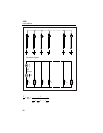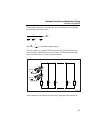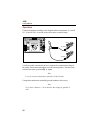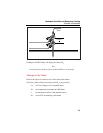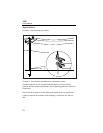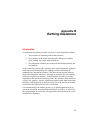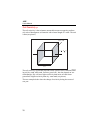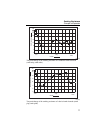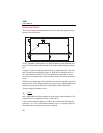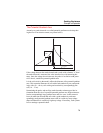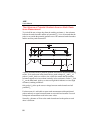74
Appendix B
Earthing Resistance
Introduction
Per definition, the earthing resistance consists of several individual resistances.
1. The resistance of connecting lead to earth electrode
2. The resistance of the actual earth electrode; earthing rod, earthing
plate, earthing strip, mesh earth electrode etc.
3. The dissipation resistance, the resistance between earth electrode and
soil potential.
As the connecting cable and the resistance of the earth electrode are negligibly
small after correct dimensioning, the earthing resistance dominantly de-
pendends on the dissipation resistance. This shows that an accurate measure-
ment of the dissipation resistance is necessary to determine the exact earthing
conditions for protective measures. As the dissipation resistance is not only
dependent on the specific soil resistivity, that is the resistance of the actual soil
( gravel, clay, granite ), but also significantly depents on the shape of the earth
electrode, a metrological check has to be made even if the position of the earth
electrode and the condition of the soil is well known.
For redimensioning of an earthing system, e.g. a lightning protection, an ap-
proximate calculation, according to the table below, is possible. As a basis for
this calculation the soil resistivity of the spot where the earth electrode is to be
installed has to be known.



